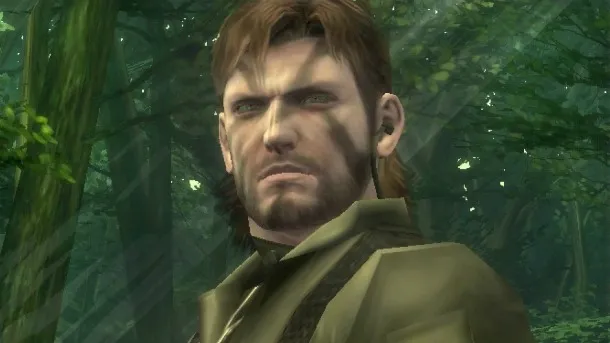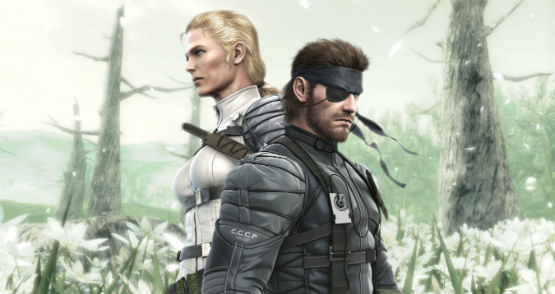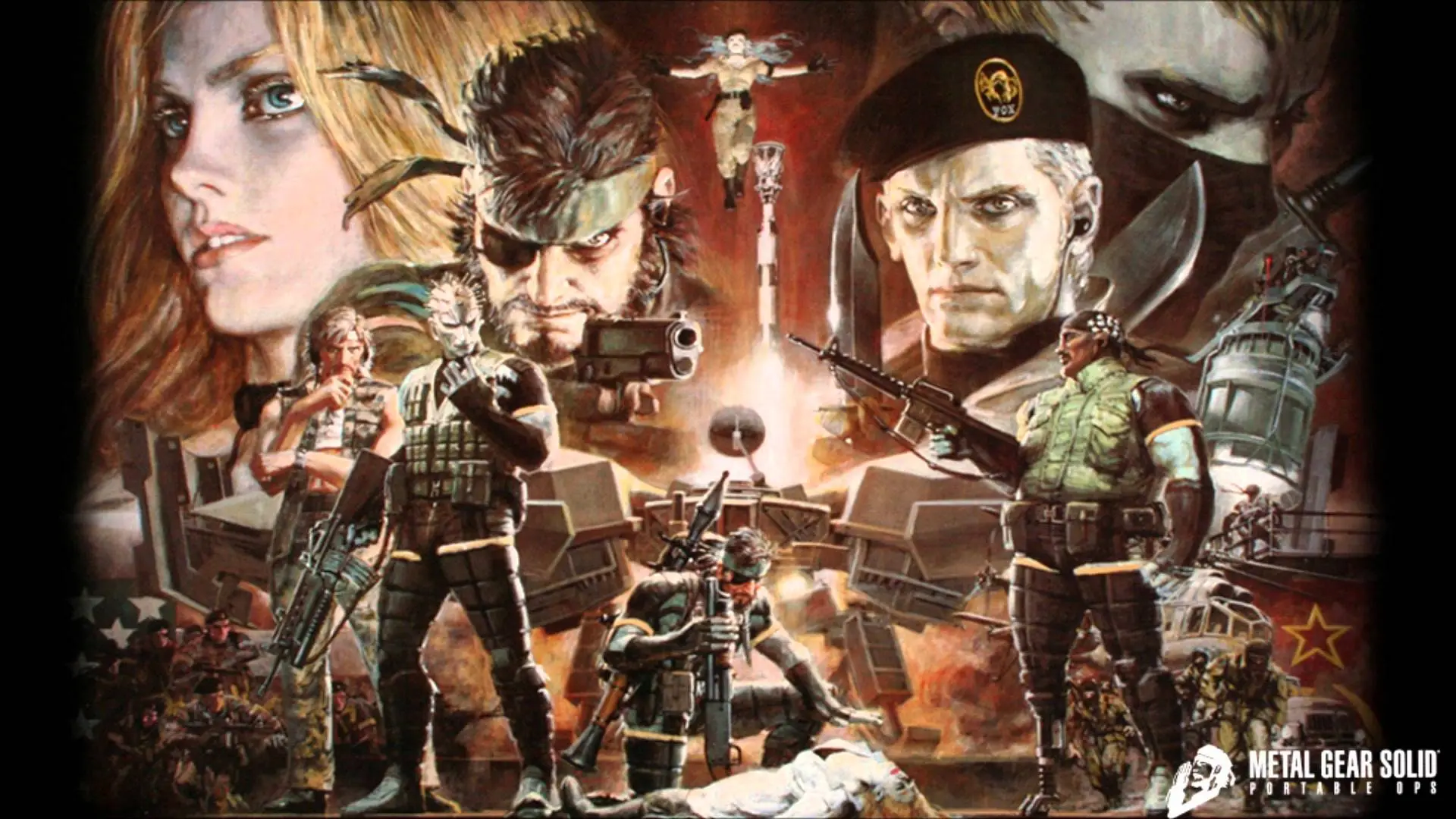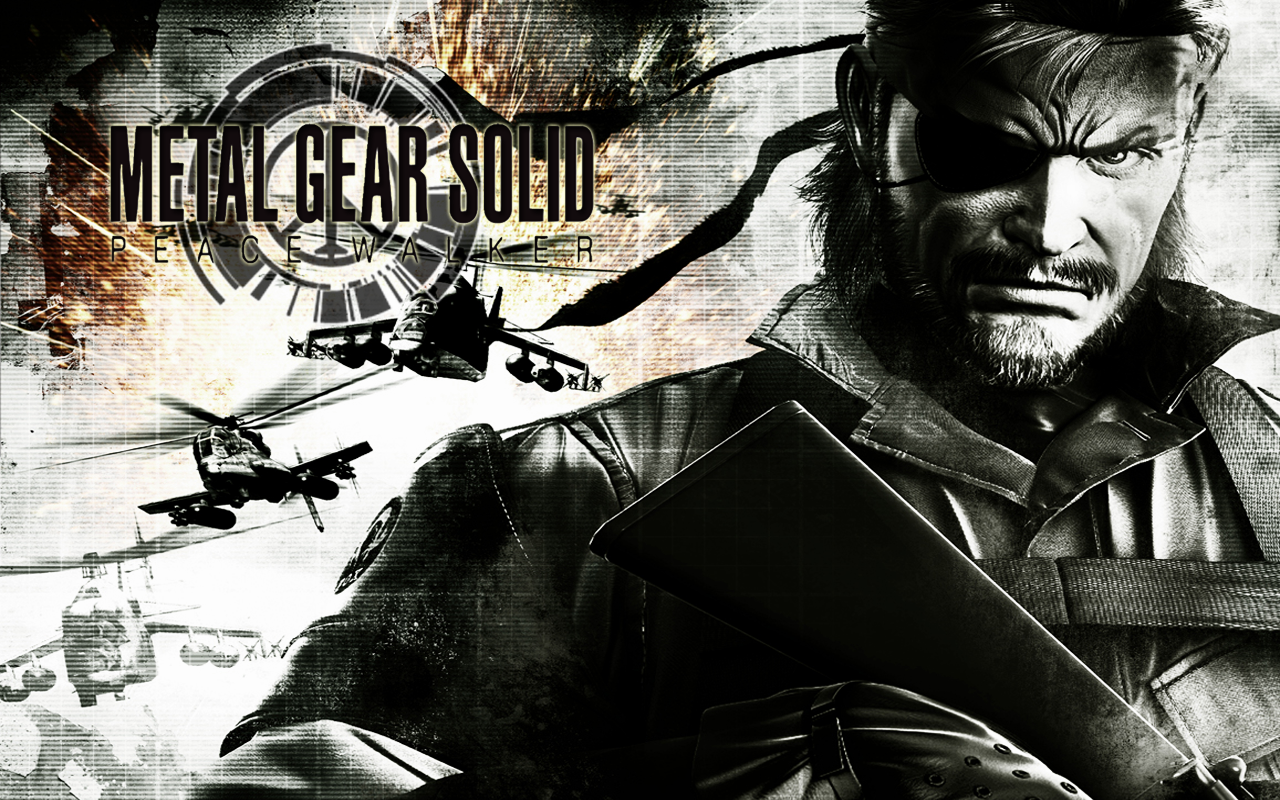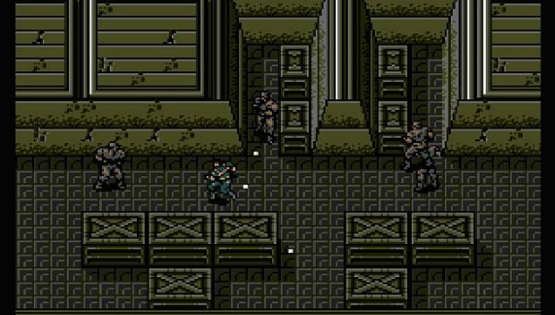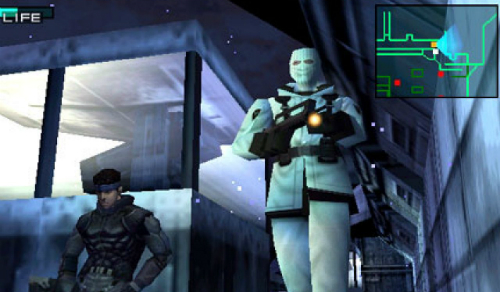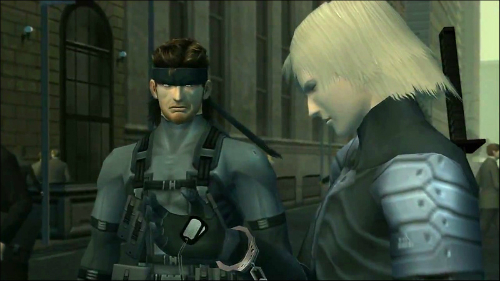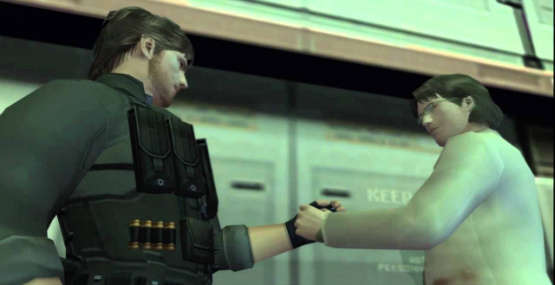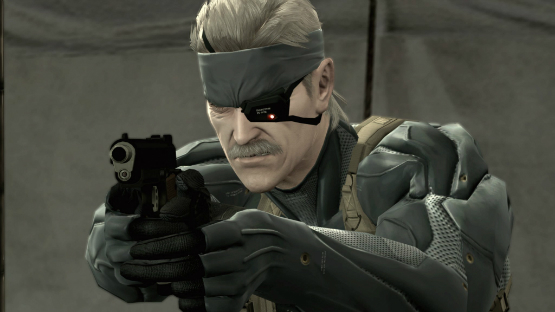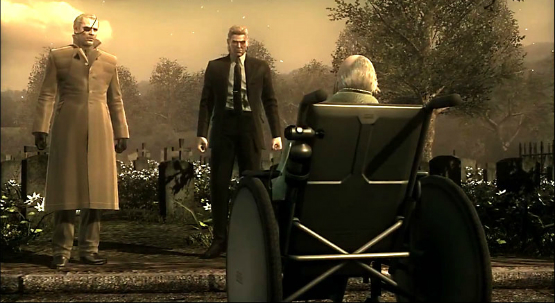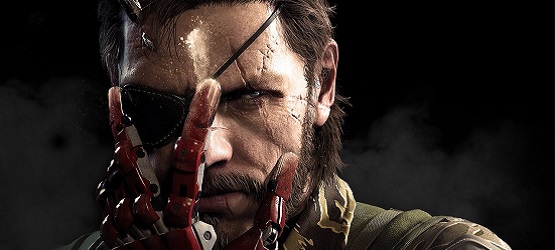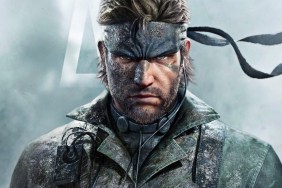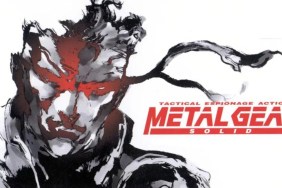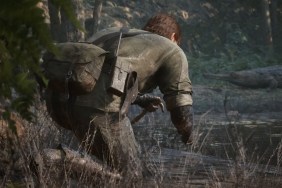It started with a vision. In 1918, a supergroup known as The Philosophers was born in the fallout of World War I, assembling the wealthiest and most powerful people on the planet together in a way Nick Fury could only dream. Ruling the world from the shadows, it wasn’t long before the tentacles of corruption permeated this most esteemed empire, bringing their once-steadfast legacy crumbling down to collusion and global terrorism.
Fast forward to the early 1960s and tensions between the Soviet Union and the United States escalated toward an all-time high. Amid the throes of the Cold War, the Philosophers’ ace card — a secret fund of $100 billion — was stolen by one Boris Volgin, a Red Army officer who acquired ludicrous wealth from the flailing supergroup. Soon thereafter, it was his son, Yevgeny Borisovitch Volgin (Thunderbolt), who illegally inherited the money to spearhead a nuclear program within the walls of the Groznyj Grad fortress.
He Who Controls the Battlefield, Controls History
Scrambling for a response, the CIA drafted in Naked Snake (Big Boss) for the daring mission, one which would involve extracting the Russian scientist Sokolov from the claws of the USSR before the Shagohad weapon was unleashed upon the world. It was here, deep within the lush Soviet jungle, that the Metal Gear legacy was born.
Spanning 10 canonical titles across 7 console generations, Hideo Kojima’s franchise boasts a complex and intricate history that stretches back for over a century. Often imitated but never equalled, Metal Gear is a pixelated treatise on betrayal, genetics, politics, philosophy and the omnipresent threat of global nuclear war. It’s a once-in-a-generation event; a war game gunning for peace; a video game series that borders on Japanese anime; the mother of all AAA showcases and, quite frankly, a bastard to keep track of.
With enough pantomime characters and triple-crossing baddies to sink The Big Shell (more on that in a bit), Kojima’s indelible franchise is a tale that grew immensely in the telling and so, ahead of The Phantom Pain’s release next week, it’s time to reflect on what has come before.
Is this the definitive timeline of Hideo Kojima’s idiosyncratic, medium-defining work? Not quite. We imagine that the only person on the planet that knows all the ins and outs of the series is Kojima himself, though we’ve ploughed through all the mainline entries in the timeline and attempted to wrangle its sprawling lore into one concise, semi-coherent whole. This is your Metal Gear Solid compendium arranged in chronological order. Please enjoy.
Operation Snake Eater
The year is 1963. FOX, a top-secret arm of the CIA, dispatches Naked Snake to infiltrate a Russian military base in order to save the aforementioned scientist, foiling a global nuclear fallout in the process. Codenamed the Virtuous Mission, Snake’s tactical outing is upended by The Boss, an old mentor and pseudo-mother figure, who has seemingly defected to Russia and granted the erratic Volgin with the Davy Crockett nuclear weapon. Snake, left for dead, is forced to flee the jungle.
After a week spent licking his wounds — or shedding his damaged skin, if we’re going to stick with the reptilian analogies — our elite solider returns to the frontlines with renewed purpose. Suspecting he had a hand in The Boss’ collusion, the US government calls Snake’s loyalty into question, giving him the impetus to return to the Soviet jungle so as to clear his name. Commence Operation Snake Eater.
Ground Control to Major Tom
By this stage, Volgin has gone rogue, stealing the all-powerful Shagohod tank from under the nose of the Russians. As a mobile fortress capable of launching nuclear warheads up to 6,000 miles, the weapon is the ultimate harbinger of death, and one that would later go on to influence the creation of the bona fide Metal Gear we know and fear.
With Volgin’s world-shaking plan taking shape, Snake begins his jungle trek, locking horns with The Boss’ ultra-elite Cobra Unit one emotion at a time along with the young Revolver Ocelot — who would later go on to become a series mainstay.
Entering the canon as the fifth mainline installment in 2004, Metal Gear Solid 3: Snake Eater was brimming with self-referential, Kojima-esque easter eggs. From the more serious foreshadowing in Rokovoj Bereg, where players could discover a trio of snakes aptly called ‘Solid’, ‘Liquid’ and ‘Solidus’, to the inclusion of Ivan Raidenovitch Raikov, who was essentially a carbon copy of the divisive, effeminate lead from Sons of Liberty.
Above all, though, it is the finale of Snake Eater that would go down as one of — if not the — best video game conclusions of all time. One electrifying boss battle and a tense escapade with the Shagohod later and our grizzled covert operative is left facing his true mission: to kill his idol-turned-traitor The Boss and prevent a nuclear between the US and Russia.
What follows is an epic, emotional tussle between the CQC experts, though once Snake eventually topples the Mother of the Special Forces, sending a decade of mentorship up in flames in the process, it’s revealed that The Boss was loyal to her country all along and was forced to die as a traitor.
Snakes and Ladders
As the credits roll on Metal Gear Solid: Snake Eater and Harry Gregson-Williams’ pitch-perfect score amplifies the raw anguish, we part ways with a character that is left questioning his own allegiances. Disillusioned, Snake abandons his country and falls off the radar.
The moment Snake Eater brings an end to an adventure that involved triple-crossing and literal snake eating, the agent formerly known as Naked Snake becomes Big Boss, inheriting a decorated title that would span decades. In fact, such was the gravitas of the cigar-chomping super-soldier that Major Zero would later, unbeknownst to him, fast-track the Les Enfant Terribles cloning program. But we’re getting a little ahead of ourselves; next up, a pitstop in Colombia.
Metal Gear Solid: Portable Ops
Fast forward to 1970 and our AWOL protagonist is captured and tortured by a FOX unit that has since gone rogue. Under the leadership of a character named Gene (Viper), the special forces have defected from the US government to manufacture the ultimate successor to the Shagohod: Metal Gear.
Siding with Roy Campbell, a Green Beret that becomes an undisputed stalwart of the MGS series, Big Boss and his new partner-in-crime create FOXHOUND, a military group specifically designed to quell the threat poised by the warped FOX unit. In doing so, the pair topple Gene once and for all — blowing Metal Gear Raxa to kingdom come — but with his last words, the erratic commander bestows Big Boss with the remainder of the Philosopher’s Legacy in the hope he will take up the mantle of creating Army’s Heaven.
A Faltering Icon
In a post credits-sting, a phone call between Ocelot and Snake Eater’s Major Zero reveals that it was the latter commanding officer who had being pulling the strings all along. Utilizing Gene as bait, Zero is able to take control of the lucrative Legacy, assemble a task force consisting of Ocelot, Big Boss, EVA, Sigint and Para-Medic, and birth a supergroup that would ultimately supplant The Philosophers. And so The Patriots were born.
Sometime after Major Zero’s rise to prominence, Big Boss is injured in the field. Teetering on the brink of death, Zero scrambles to contact US scientists in order to sample his DNA as a fail safe, paving the way for the Les Enfant Terribles cloning program. Using EVA as a surrogate mother, Big Boss’ former love interest gives birth to twins: Solid Snake and Liquid Snake. Under the astute eye of Zero, though, both clones are deemed inferior, leading to the creation of a third in the form of Solidus.
Programmed to age faster than the average human, the man-made trifecta are bona fide killing machines, and The Patriots intend on using their new recruits as weapons. However, once Big Boss uncovers Zero’s ploy, he flips the bird at the supergroup and works to create a mercenary army of his own: Militaires Sans Frontières.
Metal Gear Solid: Peace Walker
With Big Boss effectively dancing to his own tune, his new-fangled task force is drafted into Costa Rica in 1974 to tackle yet another Metal Gear threat that has come to the fore. Only this time, there’s a twist. As the all-powerful tech begins to proliferate, the rogue army has crafted a Metal Gear that can be controlled autonomously using artificial intelligence — artificial intelligence that just so happens to have been programmed to resemble the personality of The Boss.
As CIA agent Hot Coldman — no, really — attempts to manipulate the Metal Gear to launch a nuclear strike on home soil, The Boss falls on her own sword once again, upending the Peace Walker program. Saving the day once again just as the doomsday clock ticked ever closer to midnight, Big Boss eventually opts to take heed of Gene’s masterplan, setting out to spearhead an army free from governmental control to take down Zero and The Patriots. Hence the creation of Outer Heaven.
One Minute to Midnight
Barely a few months later, Big Boss plots course for a Cuban prison facility known as Camp Omega. Governed by a formidable paramilitary force (XOF) headed up by Skull Face, the group have their eyes set on the whereabouts of Major Zero, capturing both Paz and Chico for a bout of interrogation. Big Boss slinks into the black ops compound and rescues both POWs, but not without XOF sabotaging his entire military operation (Mother Base). As Ground Zeroes draws to a close, our cigar-chomping hero slips into a nine-year coma.
It is here, after Big Boss awakens from his slumber, that Metal Gear Solid V: The Phantom Pain will slot into the franchise’s lore. Charting Big Boss’ fall from grace, expect Kojima’s swan song to delve into the murky origins of Les Enfant Terribles and why exactly our decorated, near-perfect soldier ultimately became the opposing force facing his biological son.
For now, let’s circle back to where it all began with 1987’s Metal Gear. Acting as the first true introduction of Solid Snake, Hideo Kojima’s maiden project may not have aged well due to its clunky control system, but its story of patriotism, deceit and global terrorism was simply years ahead of its time.
Metal Gear
Assuming control of the FOXHOUND unit, it isn’t long before Big Boss becomes the loosest of loose cannons. Ruling over the heavily militarized Outer Heaven, the amoral legend orders construction on a Metal Gear of his own: the TX-55. Once the US learns that the creation of MGs is in danger of becoming open source, they draft in a rookie agent by the name of Solid Snake. Infiltrating the compound, Solid Snake, wet behind the ears though he may be, manages to foil Big Boss’ plan and destroy both the Metal Gear and Outer Heaven, but not without his nemesis scurrying to the relative safety of the Middle East.
Metal Gear 2: Solid Snake
Barely four years later — in Metal Gear’s timeline, at least — and a new threat has emerged in Zanzibar Land. Under the leadership of Roy Campbell, Solid Snake is dispatched once again to prevent an all-out catastrophe, locking horns with Gray Fox, the renegade FOX soldier, and finally takes down Big Boss once and for all. Or does he?
On his deathbed, our world-weary icon reveals that he is, in fact, Solid Snake’s biological father, and though common logic would dictate that Big Boss ought to be six foot under at this point, The Patriots manage to recover his body and place him in cold storage. Because in the Metal Gear Solid universe, there’s always a nanomachine-sized escape route.
So, where do we go from here? With the remains of Big Boss incubating in a secure location under the watchful eye of The Patriots, Solid Snake, now the pretender to the throne as the world’s greatest super-spy, chooses to swap tactical espionage action for an early retirement.
Dawn of a New Era
In terms of the Metal Gear timeline, Snake’s all-too-brief hiatus from the battlefield occurred between ’99 and 2005, and it’s here that Major Zero engineered a bleeding-edge AI network to operate and control The Patriots once he passes away. Hoping to utilize DNA from the dormant Big Boss to splice together an army of super-soldiers, Zero’s power-hungry craze threatens to bubble over in his twilight years, and it’s a tactic that rears its ugly head in the bitter-cold Alaskan wilderness.
In fact, such is the power of the clandestine supergroup that it’s able to shepherd George Sears — better known to you and I as Solidus Snake — into the Oval Office, becoming the 43rd President of the United States. As new threats begin to emerge, Solid Snake is forced to put the Lucky Strikes to one side and don the military garb once more; this time, Roy Campbell orders our highly-skilled agent to Shadow Moses island.
Metal Gear Solid
Held up by Liquid Snake and his army of genetically modified troops, the terrorist group usurped the complex with the intention of blackmailing the US government. Their demand? Simple. Hand over the remains of Big Boss or a nuclear warhead will be sent careering toward the United States of A.
Doing what he does best, Snake sneaks into the compound, cardboard box in one hand and the ever-trusty SOCOM pistol in the other, in order to avert yet another global crisis. Along his mission, he encounters a motley crew of villains, one which would go on to become one of — if not the — most memorable roster of baddies in video game history. From Psycho Mantis to the poignant battle with Sniper Wolf, it’s little wonder why many consider Metal Gear Solid to be the finest entry in the series.
There’s no question about it: Konami’s 1998 masterclass was an undisputed turning point in the franchise that put Hideo Kojima’s name on the map. Not only did it effectively popularize the stealth genre, it also proved the be a bold step forward for storytelling in the medium.
I Don’t Have Any More Tears Left to Shed
And so, soon after going toe to toe with an old enemy in the form of Gray Fox, who has since become a cybernetic ninja after his introduction in Outer Heaven (sound familiar?), Solid Snake confronts Liquid and the towering Metal Gear REX. In one of the finer set pieces among a game chock full of memorable moments, Snake defeats and kills Liquid, though his arm is ultimately sewn onto Revolver Ocelot, subtly teeing up a new big bad for the not-so-distant future.
Braving the elements, traitorous US officials and overlong Codec conversations, Metal Gear Solid leaves us with a Solid Snake who is nigh on becoming a legend, and his latest encounter with The Patriots introduces the likes of Hal Emmerich (Otacon) and Meryl Silverburgh, daughter to Roy Campbell and formerly a member of the Genome Army.
When the dust settles following the Shadow Moses incident, an expose carried out by the government reveals that it was Solidus Snake — remember that POTUS from earlier? — who pulled the strings behind the Alaskan terrorist ploy.
Metal Gear Solid 2: Sons of Liberty
Solidus then emerges from the shadows in earnest for Sons of Liberty. Acting as Metal Gear Solid’s debut on PlayStation 2 and arguably the most divisive entry in the franchise to date, SoL opens with a Ground Zeroes-esque prologue, one which sees Solid Snake dispatched onto the USS Discovery where a new Metal Gear is being transported: RAY, the leaner, meaner big brother to REX.
Spoiling the party is Ocelot. Possessed by Liquid’s decapitated arm and working for The Patriots, the power-mongering baddie steals the bi-pedal war machine and sinks the tanker in the process. As the colossal vessel begins to drift into the depths of the Hudson River, Solid Snake is blamed for the incident, sending our luckless hero into hiding.
The Hudson River, Two Years Ago
Two years later and another terrorist group called the Sons of Liberty — because every renegade task force in MGS has to have a cool moniker — seizes control of a decontamination facility in the North Atlantic. Solid Snake is allegedly the man at the helm of the titular rogue network, though it’s later revealed to be his clone and former POTUS, Solidus.
Aboard Big Shell, Solidus also commandeers the Dead Cell anti-terrorist unit; comprised of Fatman, Vamp and the physics-defying Fortune, the powerful trio are manipulated by The Patriots (aka the La-Li-Lu-Le-Lo) to assist in the armed takeover of Big Shell. Holding the US president hostage, the unit demands a $30 billion ransom lest they launch a nuclear warhead into Manhattan.
In response, FOXHOUND drafts in rookie agent Raiden, who picks up the mantle of lead protagonist following the Tanker prologue much to the surprise of the entire industry. No matter, though, Solid Snake still plays an integral role in the hostage situation, albeit under the not-so-subtle guise of Iroquois Pliskin at first.
A few bomb disposals and naked cartwheels later, Raiden discovers that the entire Big Shell compound is a cover-up for Arsenal Gear, an advanced and indeed submersible fortress designed by The Patriots. Holding absolute power over the nation’s nuclear reserve and Internet communications, the technical behemoth houses GW, the master AI controlling The Patriots and their rule over the States.
In order to take down the optical neural network, Raiden and Snake join forces with Otacon and his sister Emma to upload a virus into GW Independence Day style. Paving the way for one of the more memorable moments in Sons of Liberty — remember the epic handshake between the old pals after Emma’s death? — Otacon is left in charge of saving the hostages while Raiden and Snake infiltrate the massive warship.
The La-Li-Lu-Le-Lo
Confronting malfunctioning AI (fission mailed!) and a small army of mass-produced Metal Gear RAYs, Raiden then faces off with Solidus Snake in an epic battle atop Federal Hall, where we learn that the former POTUS was once Raiden’s foster father.
But the real kicker in Sons of Liberty is delivered by Ocelot. That entire Big Shell kerfuffle and the ensuing mission in Arsenal Gear? It was all orchestrated by The Patriots in an attempt to mould Raiden into the bona fide successor to Big Boss. Not only that, the shadowy organization has also kidnapped Raiden and Rose’s son, leading our protagonist to flee with Ocelot in one of the few remaining Metal Gear RAYs.
Metal Gear Solid 4: Guns of the Patriots
Some six years later, the world has been transformed by the proliferation of Metal Gear tech. Utilizing the power of nanomachines, private military corporations (PMCs) effectively rule the roost, and it’s Ocelot — who has been all but consumed by Liquid’s arm/spirit — that spearheads one of the largest of the bunch. His mission? To steal Big Boss’ remains and access The Patriots’ master AI program.
It’s one that sends the UN into a tail-spin, leaving the organization little choice but to call Solid Snake out of retirement once again in order to stop his unhinged genetic sibling once and for all. When Guns of the Patriots opens in the Middle East, we’re introduced to Old Snake. Crippled by the effects of accelerated aging, our battle-worn hero is nearing the end of his truncated lifespan, though he still has enough mileage in the tank for one final globe-trotting affair.
Old, Not Obsolete
After failing to stop Ocelot in the Middle East, Old Snake reunites with an old friend in Dr. Naomi Hunter, before being ordered to Eastern Europe in search of Big Mama (aka Snake Eater’s EVA) and the whereabouts of Big Boss’ remains. Things take a turn for the worse when EVA, suffering from a wound identical to the one from the Soviet jungle half a century ago, dies in her son’s arms as Liquid activates the Guns of the Patriots.
Plotting course for Shadow Moses island so as to recover Metal Gear REX’s nuke, considering that it’s the only warhead not on The Patriots’ radar, Liquid Ocelot then plans to blow the group’s global AI network to smithereens.
Following a Herculean tussle between REX and RAY, Raiden, Hunter and Snake cook up a new version of the FOXDIE virus — FOXALIVE, in this instance — and infiltrate the Outer Haven fortress to bring down the core AI system governing The Patriots, JD. This all culminates in the demise of the century-old supergroup and a truly epic fist fight between Snake and Liquid Ocelot on the sun-kissed open deck of Outer Haven.
Once Old Snake defeats Ocelot and the world is saved from tyranny, he visits the grave of The Boss only to cross paths with Big Boss — surprise! Thanks to the frozen remains of Solidus, the original super-solider was rebuilt for his cameo, allowing the feuding pair put old rivalries to one side, turn off life support on the geriatric Major Zero, and have a long overdue session of family, er, bonding?
In a frank confession, Big Boss admits that both he and Ocelot were gunning to do good on The Boss’ legacy for a unified world, but their vision was soon corrupted meaning that they effectively had the USA on DEFCON 1 for generations. Not only that, Ocelot — biological son of The Boss — called upon nanomachines and psychotherapy in an attempt to outfox The Patriots’ AI into believing he really was Liquid.
This is Good, Isn’t It?
Puffing one final cigar, the original hero of the Metal Gear franchise dies in the arms of Solid Snake, and Guns of the Patriots’ graveyard scene was a slice of fan service that proved to be the perfect, poignant bow for an inimitable series. Besides, with the world now entering a state of genuine peace, maybe Solid Snake can finally retire after all.
And with that, we’ve arrived in time for the franchise’s curtain call. Metal Gear Solid V: The Phantom Pain may be loaded with conspiracies relating to the fallout between Konami and Hideo Kojima, but the sequel is, in the words of Solid Snake himself, simultaneously building the future and keeping the past alive. From everything we’ve seen, Kojima is at once crafting his magnum opus and a swan song to series that you daren’t put in a box — pun intended. Pushing the Fox engine like it’s never been pushed before, The Phantom Pain is the culmination of a vision — nay, a legacy — that began in 1987 and now, almost three decades later, it’s time to bid adieu.
Trying to ascribe a single adjective to Metal Gear Solid becomes really rather difficult, but if we had to settle on one, it would be special. Hideo Kojima’s stealth masterclass means so much to so many people that it feels as though the entire gaming community is being pulled together by the release of Metal Gear Solid V: The Phantom Pain. It’ll debut on September 1, and we hope you’ll join us for one final salute to gaming’s greatest franchise.
Essential Reading:
- The VOTE: Best Metal Gear Solid Game?
- YouTube Gaming Kinda Sucks
- How to Upload PS4 Videos to YouTube in 60 Seconds
MGS V: The Phantom Pain - Who's Who?
-
Who's Who?

Get acquainted with the leading players of The Phantom Pain ahead of its release next week.
-
Punished/Venom Snake (Big Boss)
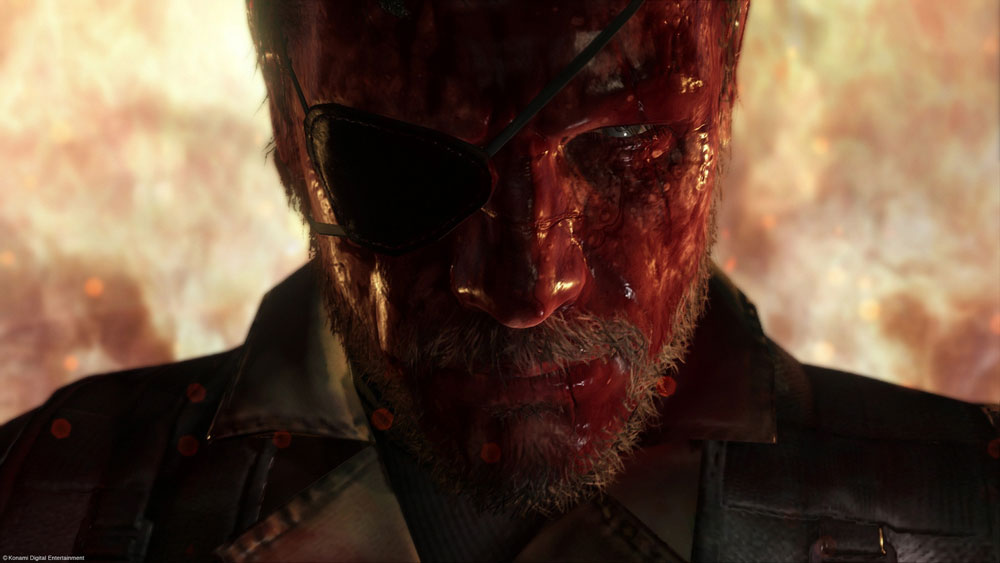
After surviving the Hieronymo and Peace Walker Incidents, Naked Snake is no longer a budding apprentice; instead, Metal Gear Solid V: The Phantom Pain will introduce Punished/Venom Snake. Better known to you, I and the Afghan army as Big Boss. In the wake of the Ground Zeroes attack by XOF, not to mention Paz’s bomb exploding, our world-weary protagonist is left on the brink of death and slips into a nine-year coma, during which time he loses his left arm.
Fast forward to 1984 and Venom Snake awakens from his coma to exact revenge on those who left both him and Miller for dead. Crossing paths with Ocelot in Afghanisation, the old accomplices reunite and venture deep into the Soviet-occupied territory.
-
Benedict "Kazuhira" Miller

Second in command to the Militaires Sans Frontières (Soldiers Without Borders) operation, Kaz has remained a good friend to Big Boss since they crossed paths in Colombia. Though they were enemies at first, Kaz and Venom Snake shared a common drive for peace, and as the scientific expert so aptly put: “there’s no such thing as an absolute enemy. Our enemies are always relative.” When Big Boss slipped into a coma, it was Kaz who took the reins of MSF, eventually transforming the military outfit into Diamond Dogs.
-
Quiet
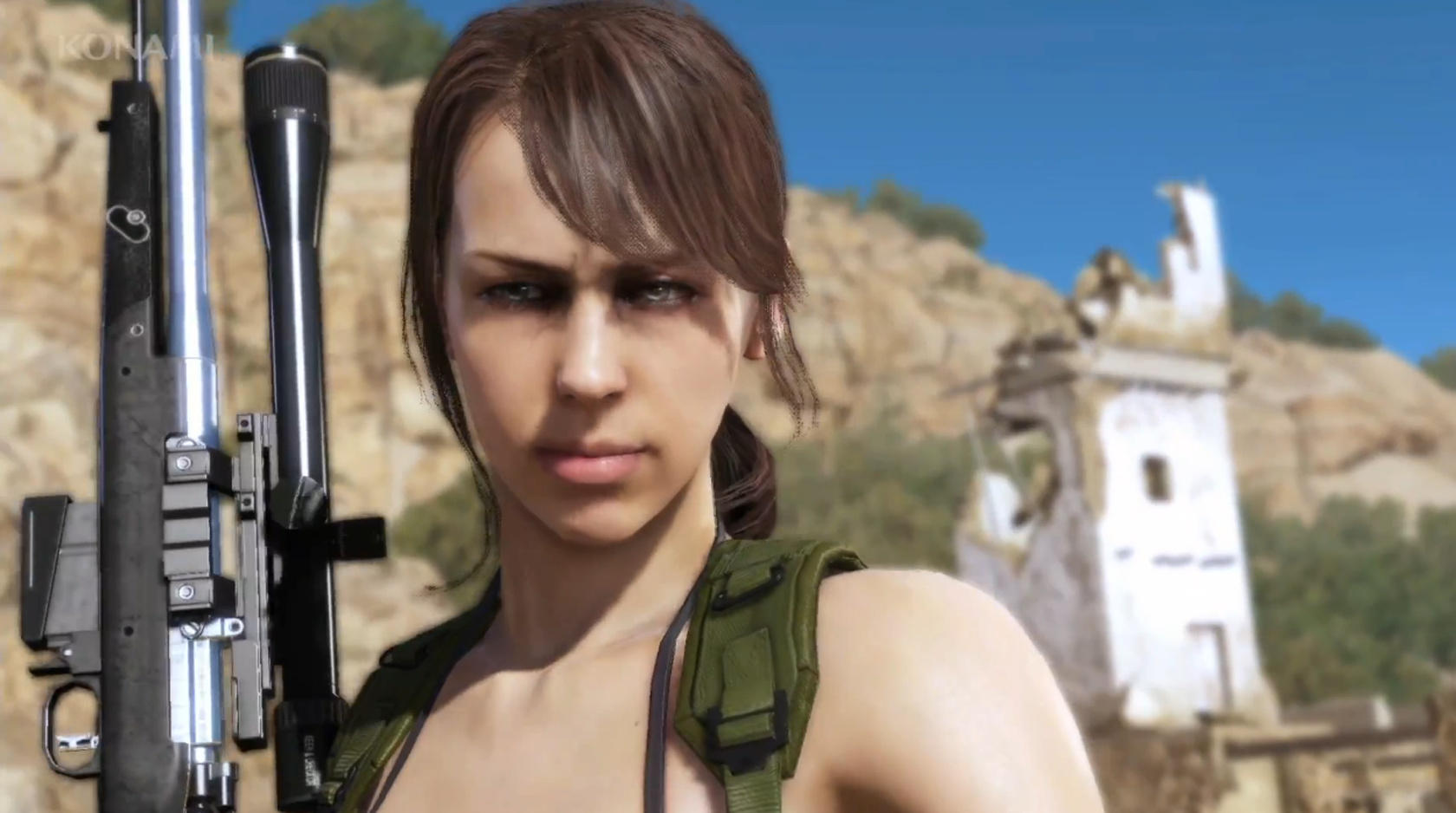
Kicking up quite the fuss when she was first unveiled, Quiet is a mute sniper who possess supernatural abilities. When the game opens, she’s tasked with locating and killing Big Boss, though opts against it after her unknown contact orders her not to fire. Maintaing a vow of silence, the sharpshooter is eventually recruited to Mother Base despite Kaz Miller’s apprehensions. Quiet owns two sniper rifles: a lethal one known as Wicked Butterfly and a non-lethal armament called Guilty Butterfly. And yes, there is purportedly a genuine reason for her scant clothing.
-
Revolver "Shalashaska" Ocelot
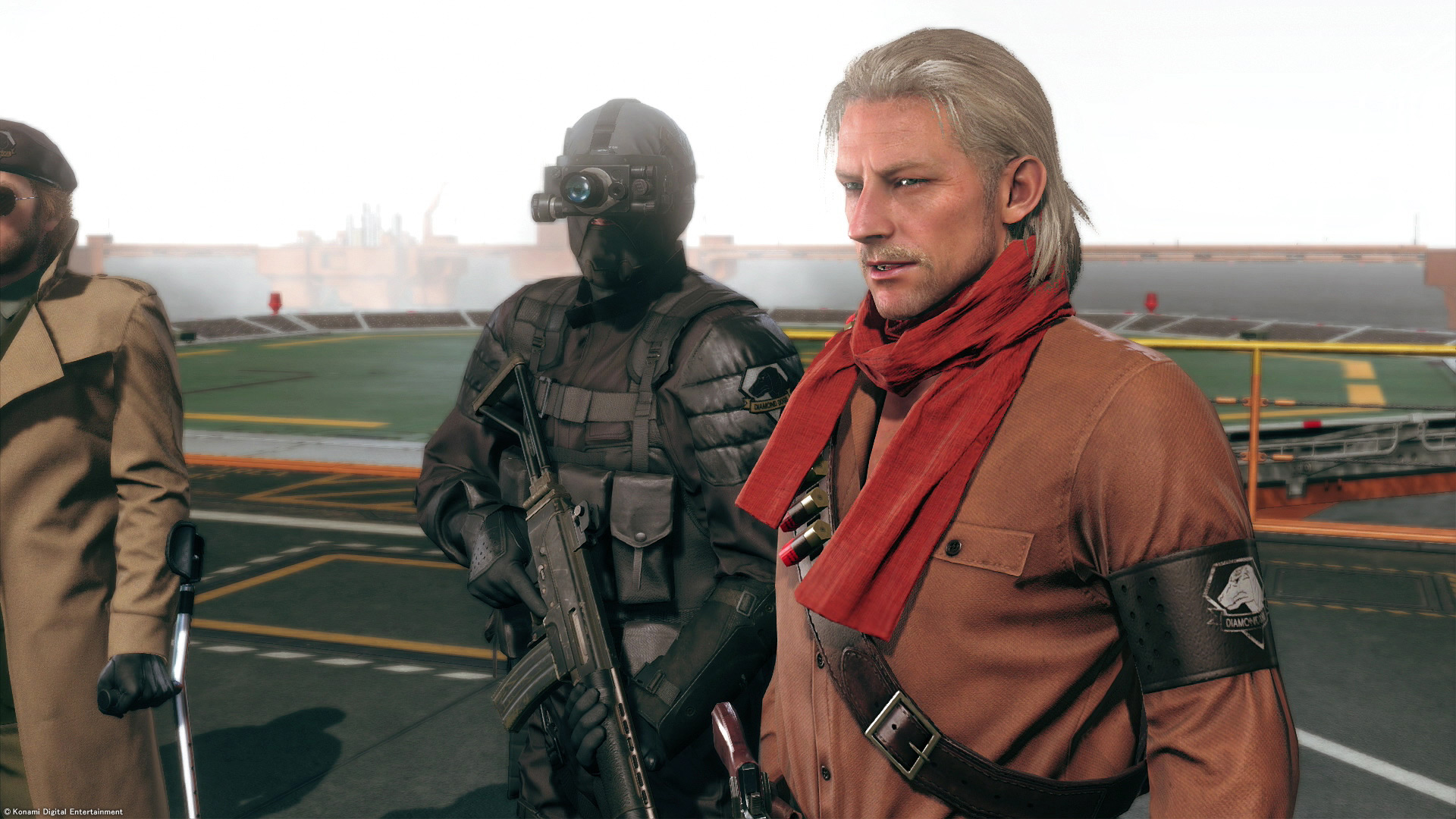
Draw! The Phantom Pain welcomes back the gunslinging expert in a major way, with Ocelot assisting Big Boss in his escape from the hospital and even whipping the Diamond Dogs into shape when Kaz is captured in Afghanistan. Revolver Ocelot/ADAM may switch allegiances throughout the course of the Metal Gear series, but the Spaghetti Western mega fan is ultimately loyal to Big Boss.
-
Huey Emmerich
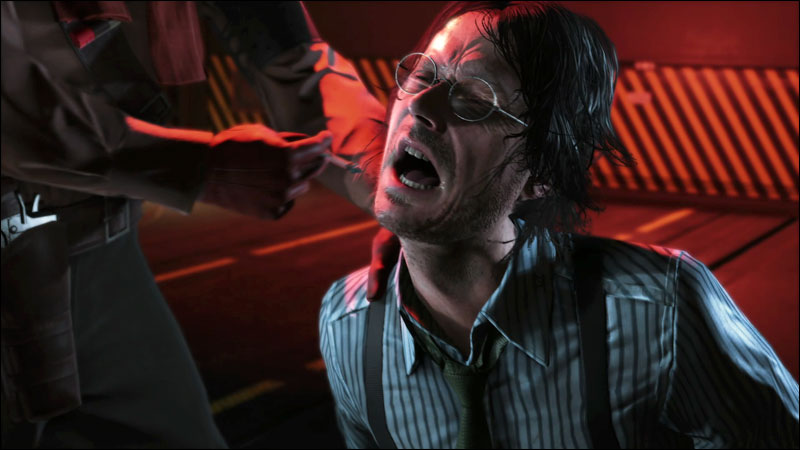
Father to Hal (Otacon), Huey Emmerich is the mechanical genius responsible for the Peace Walker incident and transforming the nascent Metal Gear tech into bi-pedal killing machines. Married to Dr. Strangelove and raising his aforementioned son in 1980, Huey harbors innate connections to the XOF attack on Mother Base seen in Ground Zeroes, and it’s this alleged affiliation that will see him in hot water with both Kaz and Big Boss when The Phantom Pain opens.
-
Eli
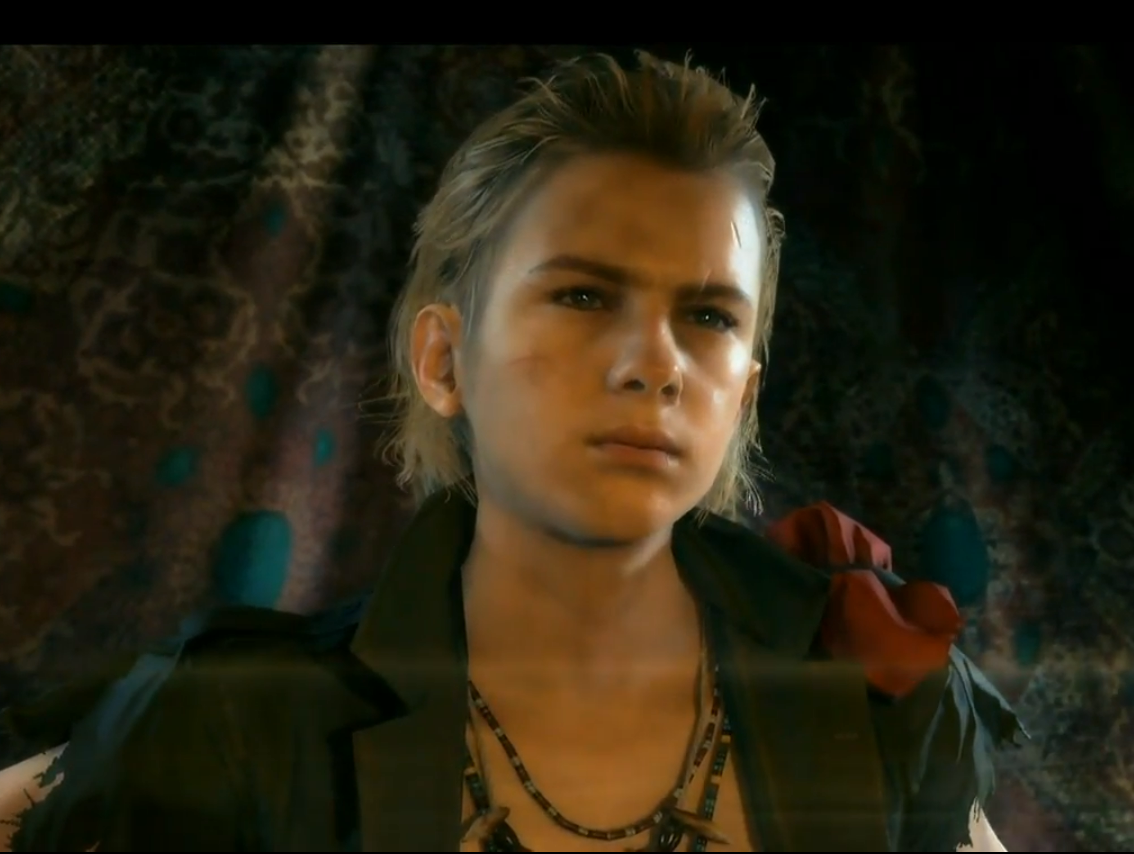
A young boy who believes he is part of the Les Enfant Terribles cloning program, Eli crosses path with Big Boss in 1984. We can’t delve too much further into Eli’s back story for fear of unveiling spoilers, though it’s understood the child soldier will be instrumental in Skull Face’s villainous plan.
-
Skull Face
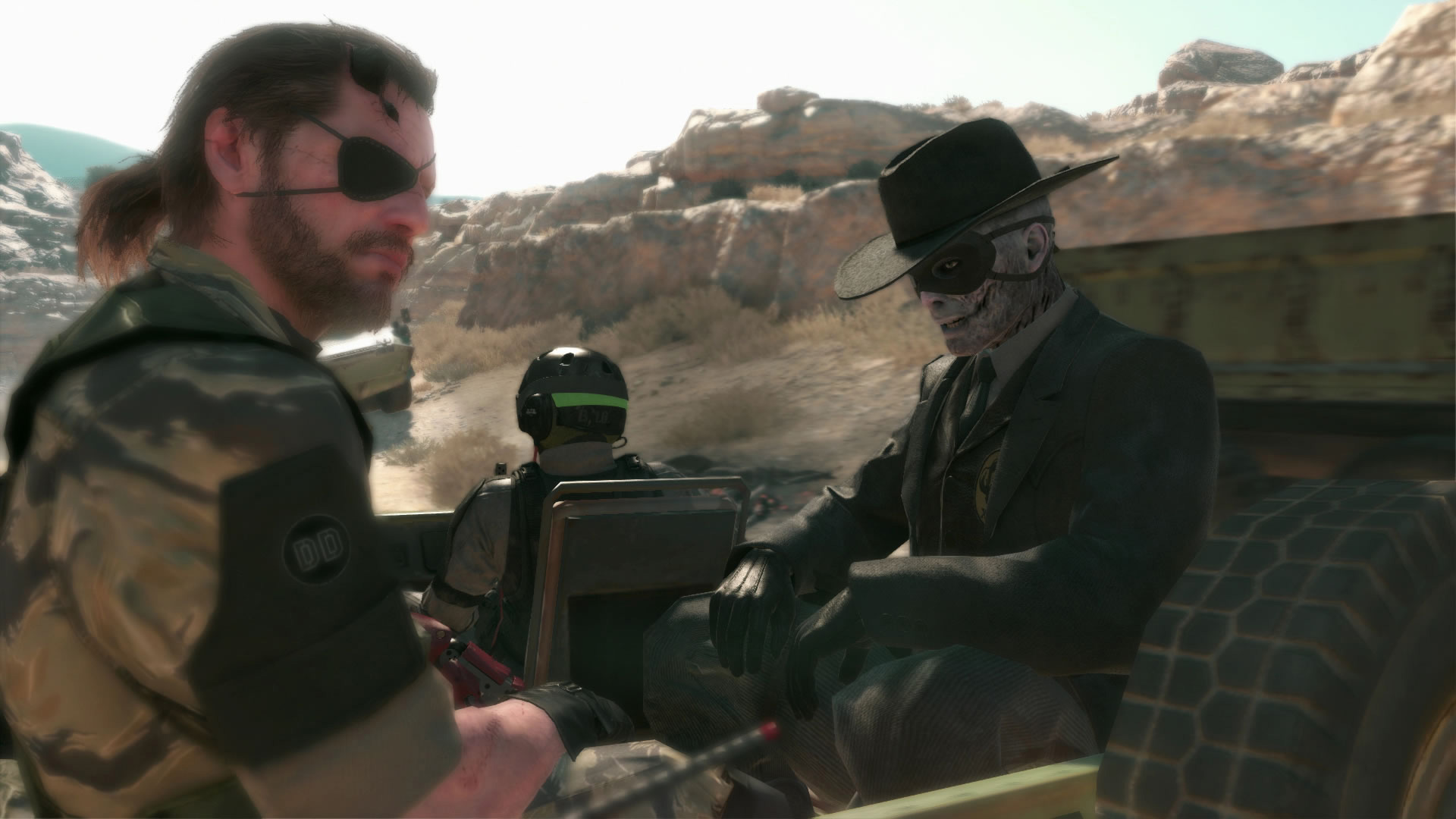
Speaking of which, one of the chief antagonists in The Phantom Pain will be Skull Face. As the mutilated commander of XOF, the villain quickly caught wind of Major Zero’s masterplan to supplant his position among The Patriots with artificial intelligence, leading him to target the enigmatic leader with a new form of Metal Gears, the Walker Gear. Skull Face also watches over the Parasite Unit, too, and even sports a Glasgow Smile — you know, just incase his appearance wasn’t unnerving enough.
-
Ishmael

Keeping up the references to Moby-Dick, Ishmael is a fellow hospital patient who claims he watched over Big Boss during his nine-year slumber, even helping him escape from the facility. Not much is known about the character, or what he’s hiding beneath those bandages, but it’s understood he holds some form of connection to Quiet, the equally-mysterious sniper glimpsed in The Phantom Pain’s trailers. Is Kojima hiding an ace up his sleeve with Ishmael?

